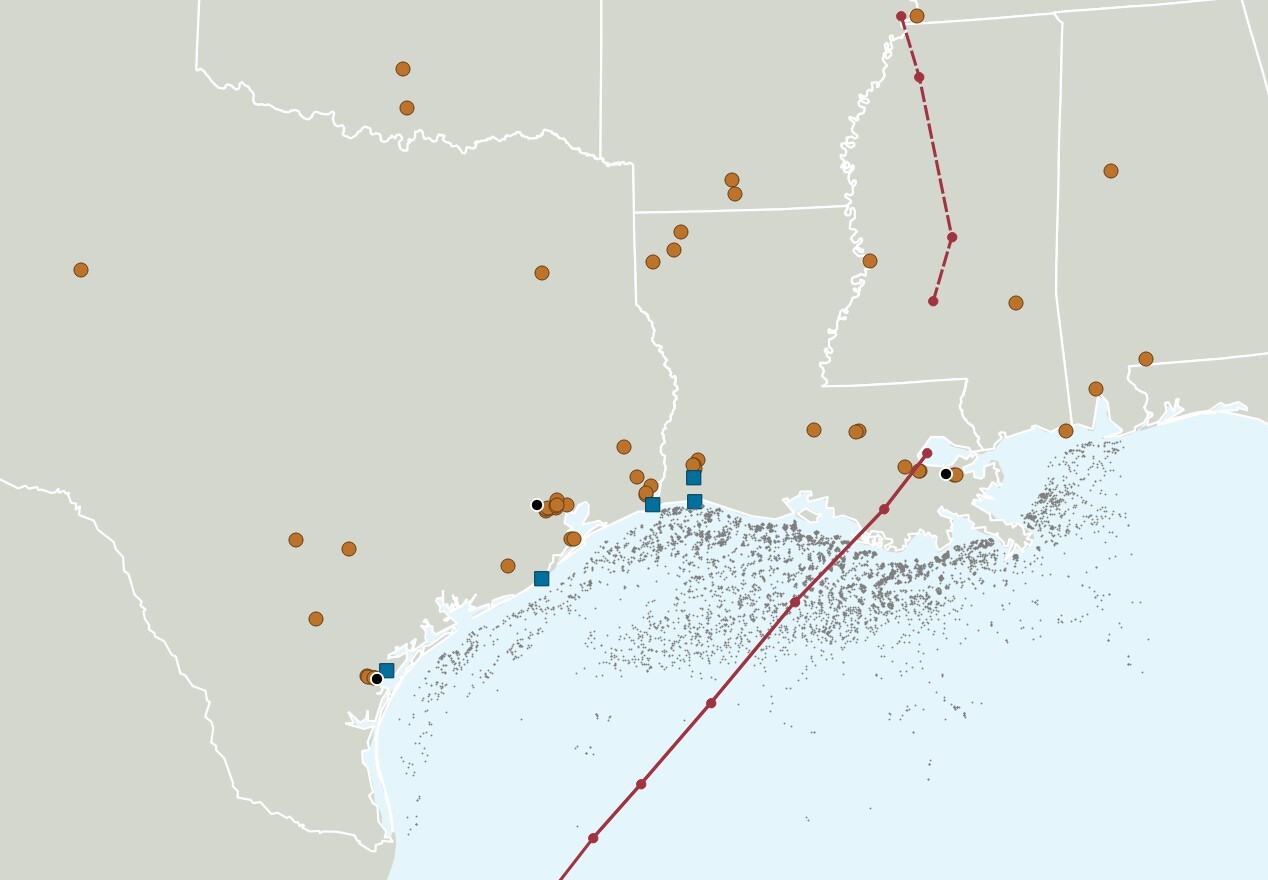
Raymond James analysts reported that U.S. crude oil prices jumped more than 2%, closing above $68/bbl on Sept. 12. (Source: Shutterstock)
After making landfall on Sept. 12, Hurricane Francine, which has since downgraded to a tropic storm, had taken energy infrastructure offline, including offshore oil and gas production, refining and narrowed gas deliveries to LNG export facilities, according to the U.S. Energy Information Administration.
Several ports on the U.S. Gulf Coast, responsible for more than 95% of the nation’s 4 MMbbl/d crude oil exports, have either closed or imposed restrictions.
As of 1 p.m. CST on Sept. 12, the Bureau of Safety and Environmental Enforcement reported that 169 platforms, or more than 45.5% of offshore Gulf of Mexico facilities, were evacuated, along with a handful of rigs.
In the GoM, BSEE reported an estimated 41.74% of oil production, or 730,472 bbl/d of oil, was shut in. Natural gas production was more greatly impacted, with more than 53% of volumes, or 991.68 MMcf/d of production, was shut in. Shut-in production is based on the amount of oil and gas the operator expected to produce that day.
Raymond James analysts reported that U.S. crude oil prices jumped more than 2%, closing above $68/bbl on Sept. 12.
“U.S. WTI crude futures rose by 2.5%, to settle at $68.97/bbl, while Brent crude futures rose by 1.9%, to settle at $71.97/bbl,” Raymond James said in a Sept. 13 report.
The Energy Information Administration said the hurricane’s path has not affected Gulf Coast LNG terminals “equally.” Operations continued at terminals in South Texas, and ports were open with restrictions.
In South Louisiana, natural gas deliveries to Cameron LNG declined ahead of the hurricane's landfall and were down by 60% to 1.2 Bcf/d on Sept. 12 from 2.2 Bcf/d on Sept. 8.
The Ports of Cameron and Lake Charles were closed but are being assessed for reopening. The U.S. Coast Guard reported that the Lake Charles port areas in condition “recovery,” meaning sustained gale force winds (39 mph) are no longer expected.
Several refineries around Baton Rouge, Lake Charles and New Orleans— with a combined 3 MMbbl/d refining capacity (about one-sixth of U.S. refinery capacity) —appear to be running at reduced rates, the EIA said.
Exxon Mobil reduced refining activity at its 523,000 bbl/d Baton Rouge refinery, the agency said, citing media reports.
As of Sept. 13, about 109,000 Louisiana customers were without power and 11,550 in Texas, according to poweroutage.us.

Recommended Reading
Comments
Add new comment
This conversation is moderated according to Hart Energy community rules. Please read the rules before joining the discussion. If you’re experiencing any technical problems, please contact our customer care team.

